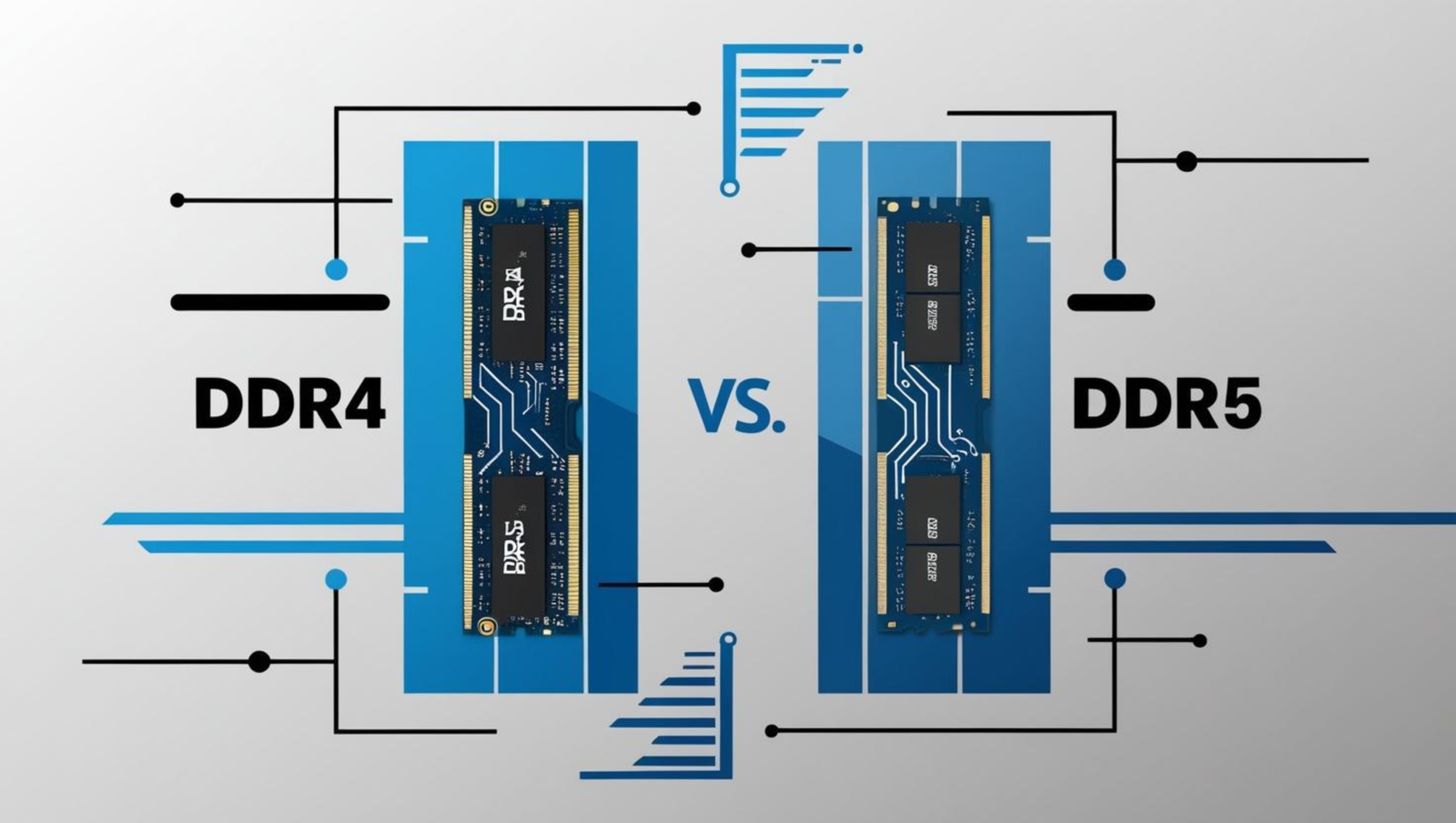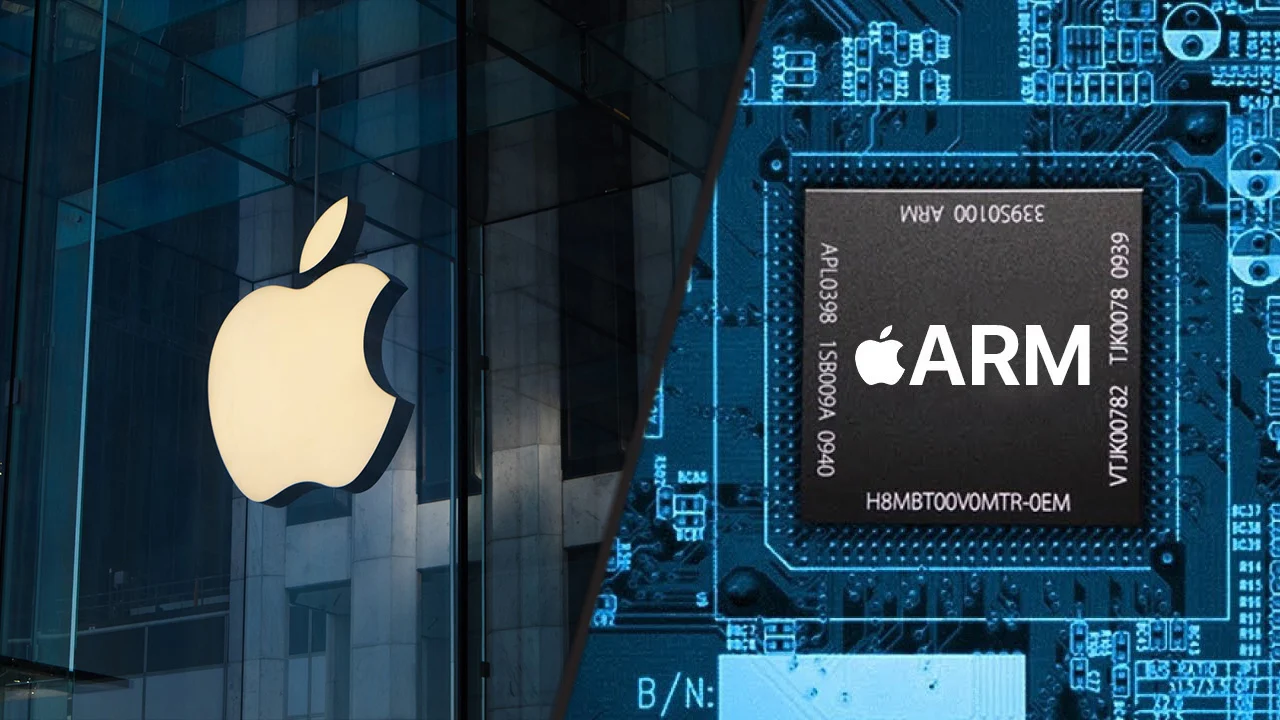DDR4 vs. DDR5 RAM: What’s the Difference?
When building or upgrading a computer, choosing the right memory is crucial. Understanding the difference between DDR4 and DDR5 helps make an informed decision. These two generations of Double Data Rate Synchronous Dynamic Random-Access Memory (DDR SDRAM) have unique features and performance metrics. While DDR4 debuted in 2014, DDR5 has emerged as the go-to memory for modern systems. This post explores the differences, benefits, and considerations when comparing DDR4 to DDR5.
Capacity and Form Factor
One major difference between DDR4 and DDR5 is their capacity. DDR5 modules typically start at 32 GB per kit, often configured as 2 x 16 GB. In contrast, DDR4 kits commonly start at 16 GB. This increased base capacity is essential for demanding applications like gaming, video editing, and machine learning.
Although DDR4 and DDR5 modules look similar, they are not interchangeable. DDR5 features a different notch position on its connector pins, preventing incorrect installation. Importantly, all AMD AM5 motherboards exclusively support DDR5. Meanwhile, Intel’s 12th-generation processors work with both DDR4 and DDR5, depending on the motherboard choice.
Performance Enhancements
Speed is another key difference between DDR4 and DDR5. DDR5 starts at 3,200 MHz and can reach up to 8,000 MHz. Most consumer DDR5 modules currently max out at around 6,400 MHz, providing significantly faster data transfer rates compared to DDR4. For overclocking enthusiasts, DDR5 offers Intel’s XMP 3.0, which allows five customizable profiles—three manufacturer-set and two user-configurable.
Despite its higher clock speeds, DDR5 has a slightly higher CAS latency. For example, DDR5’s CAS latency starts at 32, compared to DDR4’s average of 16. However, the faster speeds more than compensate for this, resulting in better overall performance in tasks such as gaming and content creation.
Architectural Improvements
The internal architecture of DDR5 marks a significant improvement over DDR4. DDR5 modules feature two 32-bit channels per module, doubling the efficiency of DDR4’s single 64-bit channel. This dual-channel architecture boosts data transfer rates, making DDR5 ideal for high-bandwidth applications.
Another standout feature is on-die Error Correction Code (ECC). Unlike DDR4, which relies on motherboard support for ECC, DDR5 includes built-in error correction. This enhances system stability and reduces the likelihood of crashes caused by memory errors.
Power Efficiency
Power efficiency is a notable difference between DDR4 and DDR5. DDR5 operates at a lower voltage of 1.1V, compared to DDR4’s 1.2V. This reduction not only decreases power consumption but also minimizes heat generation. Additionally, DDR5 modules include a power management chip, which optimizes power distribution. Overclockers benefit from this feature as it provides greater voltage headroom for higher speeds.
Considerations for Upgrading
If you’re building a new PC, DDR5 is the better choice due to its advanced features and future-proofing capabilities. Initially, DDR5 modules were much more expensive than DDR4, but prices have dropped as adoption has grown. However, for users with existing DDR4 systems, upgrading to DDR5 may not be cost-effective unless the entire platform is updated.
Motherboard compatibility is critical when considering the difference between DDR4 and DDR5. While DDR5 is gaining traction, many DDR4 motherboards remain in use, providing sufficient performance for a range of applications. Assess your system’s requirements and budget before making a decision.
Comparing Key Features
| Feature | DDR4 | DDR5 |
|---|---|---|
| Base Speed | 2,133 MHz | 3,200 MHz |
| Maximum Speed | ~4,800 MHz | ~8,000 MHz |
| Voltage | 1.2V | 1.1V |
| Error Correction | External (optional) | On-die ECC |
| Channels per Module | Single 64-bit | Dual 32-bit |
| Compatibility | Widely available | Limited to newer systems |
Real-World Applications
Understanding the difference between DDR4 and DDR5 is vital for choosing the right memory for specific use cases:
- Gaming: DDR5’s higher speeds improve frame rates and loading times in modern games.
- Professional Workflows: Video editing, 3D rendering, and simulations benefit from DDR5’s increased bandwidth and capacity.
- Everyday Use: DDR4 remains a cost-effective option for basic tasks like web browsing and document editing.
Future of DDR5
As technology evolves, DDR5 is becoming the new standard for desktop computers. Processor manufacturers are optimizing for DDR5, and software applications are designed to leverage its capabilities. The adoption curve for DDR5 is expected to accelerate, making it a worthy investment for new systems.
Conclusion
The difference between DDR4 and DDR5 lies in speed, capacity, architecture, and power efficiency. DDR5 offers superior performance, making it ideal for demanding applications and future-proofing. However, DDR4 remains a practical choice for existing systems. Evaluate your needs, budget, and compatibility to make the best decision.




Publicar comentário